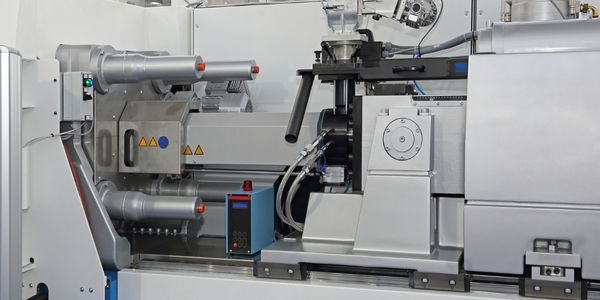Download PDF
Driving the Future: How Advantech’s Innovative Solutions Are Spurring the Evolution of Manufacturing in Indonesia
Technology Category
- Platform as a Service (PaaS) - Connectivity Platforms
Applicable Functions
- Discrete Manufacturing
- Quality Assurance
Use Cases
- Manufacturing System Automation
- Machine Condition Monitoring
Services
- System Integration
The Challenge
The Indonesian manufacturer, a leading provider of key solutions to corporate partners worldwide, was seeking to enhance its production line efficiency. The company needed equipment monitoring solutions to bolster the output of its production line processes. The challenge was to find a solution that was compact and flexible enough to be installed in diverse factory environments and support a wide range of machinery and equipment. The company also faced budget constraints due to the realities of global competition, which limited funding for infrastructure investments.
About The Customer
The customer is a leading manufacturer in Indonesia that has been providing key solutions to corporate partners from around the world since 2009. The company's clients are based in various countries, including Sweden, the US, Japan, and Malaysia. The manufacturer specializes in machine design, material selection, and process design, providing its clients with best-in-class solutions to maximize the efficiency and value of their own products and operations. The company is young and ambitious, striving to grow its reputation and competitiveness further.
The Solution
Advantech provided a complete edge solution ready package, the ESRP-SCS-UNO1372, which includes a high-performance Intel Atom® multi-core processor, fanless DIN-rail compact form factor, Windows® 7 Professional for Embedded Systems, and CODESYS control runtime and visualization software. This solution enabled real-time PLC or PLC/ Softmotion control with flexible Fieldbus options such as PROFINET, EtherCAT, EtherNet/IP, and Modbus TCP/RTU, in addition to providing data visualization in parallel on different HMI clients. Advantech also supplied EKI-5526I unmanaged switches, ADAM-4571 and ADAM-4571L data gateways, providing a platform solution that was easy to develop, configure, and deploy. This solution allowed cost-effective monitoring systems to be quickly deployed for use in a wide range of factory environments.
Operational Impact
Related Case Studies.

Case Study
IoT enabled Fleet Management with MindSphere
In view of growing competition, Gämmerler had a strong need to remain competitive via process optimization, reliability and gentle handling of printed products, even at highest press speeds. In addition, a digitalization initiative also included developing a key differentiation via data-driven services offers.

Case Study
Siemens Wind Power
Wind provides clean, renewable energy. The core concept is simple: wind turbines spin blades to generate power. However, today's systems are anything but simple. Modern wind turbines have blades that sweep a 120 meter circle, cost more than 1 million dollars and generate multiple megawatts of power. Each turbine may include up to 1,000 sensors and actuators – integrating strain gages, bearing monitors and power conditioning technology. The turbine can control blade speed and power generation by altering the blade pitch and power extraction. Controlling the turbine is a sophisticated job requiring many cooperating processors closing high-speed loops and implementing intelligent monitoring and optimization algorithms. But the real challenge is integrating these turbines so that they work together. A wind farm may include hundreds of turbines. They are often installed in difficult-to-access locations at sea. The farm must implement a fundamentally and truly distributed control system. Like all power systems, the goal of the farm is to match generation to load. A farm with hundreds of turbines must optimize that load by balancing the loading and generation across a wide geography. Wind, of course, is dynamic. Almost every picture of a wind farm shows a calm sea and a setting sun. But things get challenging when a storm goes through the wind farm. In a storm, the control system must decide how to take energy out of gusts to generate constant power. It must intelligently balance load across many turbines. And a critical consideration is the loading and potential damage to a half-billion-dollar installed asset. This is no environment for a slow or undependable control system. Reliability and performance are crucial.

Case Study
Integration of PLC with IoT for Bosch Rexroth
The application arises from the need to monitor and anticipate the problems of one or more machines managed by a PLC. These problems, often resulting from the accumulation over time of small discrepancies, require, when they occur, ex post technical operations maintenance.

Case Study
Refinery Saves Over $700,000 with Smart Wireless
One of the largest petroleum refineries in the world is equipped to refine various types of crude oil and manufacture various grades of fuel from motor gasoline to Aviation Turbine Fuel. Due to wear and tear, eight hydrogen valves in each refinery were leaking, and each cost $1800 per ton of hydrogen vented. The plant also had leakage on nearly 30 flare control hydrocarbon valves. The refinery wanted a continuous, online monitoring system that could catch leaks early, minimize hydrogen and hydrocarbon production losses, and improve safety for maintenance.

Case Study
Plastic Spoons Case study: Injection Moulding
In order to meet customer expectations by supplying a wide variety of packaging units, from 36 to 1000 spoons per package, a new production and packaging line needed to be built. DeSter wanted to achieve higher production capacity, lower cycle time and a high degree of operator friendliness with this new production line.

Case Study
Robot Saves Money and Time for US Custom Molding Company
Injection Technology (Itech) is a custom molder for a variety of clients that require precision plastic parts for such products as electric meter covers, dental appliance cases and spools. With 95 employees operating 23 molding machines in a 30,000 square foot plant, Itech wanted to reduce man hours and increase efficiency.





